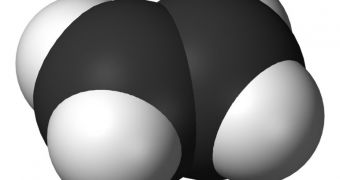Interstellar space is an unwelcoming environment, where temperatures reach as low as 20 Kelvin (-253.15 degrees Celsius or -423.67 degrees Fahrenheit). However, a new study shows that even at these extreme temperatures, some key chemical reactions can take place, between neutral radicals and neutral molecules.
Radicals are known to play an important role in plasma chemistry, combustion, biochemistry, atmospheric chemistry, polymerization and many other chemical processes, including human physiology. Their reactions with neutral molecules are known as "neutral-neutral" reactions and were not known to be possible at extremely low temperatures.
But the new study, made by Argonne National Laboratory senior chemist Stephen Klippenstein, along with colleagues at Sandia National Laboratories, the Institute of Physics, University of Rennes, France and the University of Cambridge, U.K., shows the dynamics of these reactions.
Certain molecules were found to rapidly react at the lowest temperatures of the interstellar space by combining theoretical and experimental work for a sample class of reactions between oxygen atoms and alkenes.
"It was remarkable," explained Klippenstein, "just how well theory and experiment agreed throughout the whole spectrum from 20 Kelvin to room temperature. This means that we can rely on theory to predict which reactions will happen quickly."
Large-scale experiments on these reactions in the given conditions are extremely difficult, if not impossible to perform, so the fact that the team established a working model for interstellar chemistry is really important, proving that ion-based reactions are not all that's happening in deep space.
"My collaborators have developed some great experimental techniques for measuring these reactions at low temperatures," concluded Kippenstein. "But such experiments are still very time-consuming and are also hard to apply to many reactions. So schemes for predicting the reactivity for arbitrary reactions, either a priori or from extrapolation of measurements at higher temperatures, are of great utility to modelers of interstellar chemistry."

 14 DAY TRIAL //
14 DAY TRIAL //